
Community garden
The adventure started in August 2016, when Camborea was offered by generous donors and friends a field at the center of the village in order to launch an edible garden project.
As you might have read through our other pages, our villages lack water and crops are badly affected by it. Cambodia is a big producer of rice, and the farmers of Angkor Thom do not miss the rule, but at least them, are doing it in a natural way and without any chemicals for – most often – their own consumption. But aside from rice, growing other things is rare even if most villagers try to grow resilient vegetables. Alas, without much success.
With this garden, we intend to train the most sensitive families to a reasoned and natural agriculture, with notions of permaculture and agro-ecology, and especially to a varied and nutritious vegetable production. Respect for the environment and the return of biodiversity will be an integral part of the project, with awareness raising for children through discovery workshops. Once the families are trained, we will help them set up their own vegetable garden at home, a typical permaculture garden of our creation, providing them with all the equipment they need, clean and reproducible seeds, and of course our support to keep it perennial.
With this program we also want to fight malnutrition which is rampant in rural Cambodia. It is of utmost importance for us to have people well-nourished and to keep our fields away from pesticides and other chemical agents.
Difficult beginnings !!!
That’s true, the first year and a half was quite catastrophic because of all the problems encountered. The land is an old rice paddy tired by monoculture, very sandy and without shade, which has the effect to let the plants burn under the blazing sun. The animals of the neighborhood also came to feast, our small barriers not really stopping them. The insects were obviously invited to the party, and we didn’t know how to control them. And last but not least, the flooding of rice fields around us by the villagers, that covered our ground with 20 centimeters of water a good part of the year.
The land at the beginning…
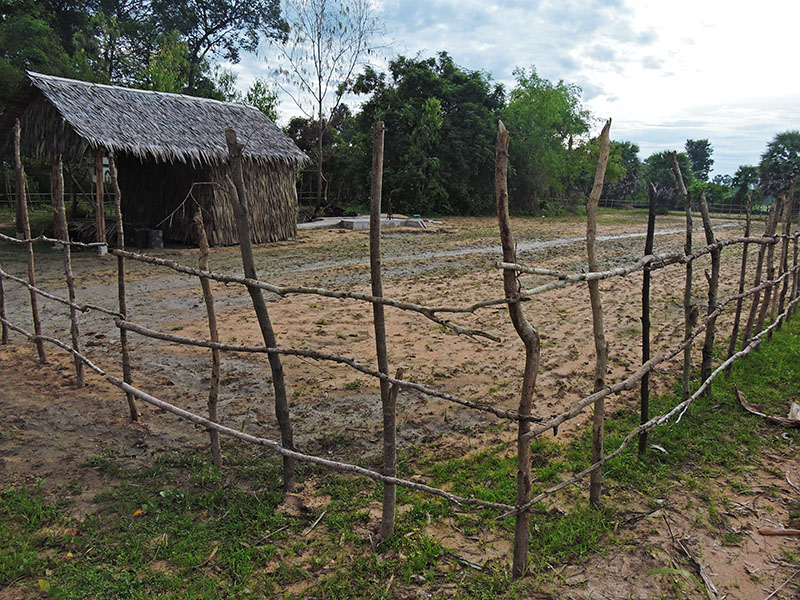

But we still could managed to produce some vegetables, which we offered in large part to the neediest families of the village, and did our first seeds with the rest.


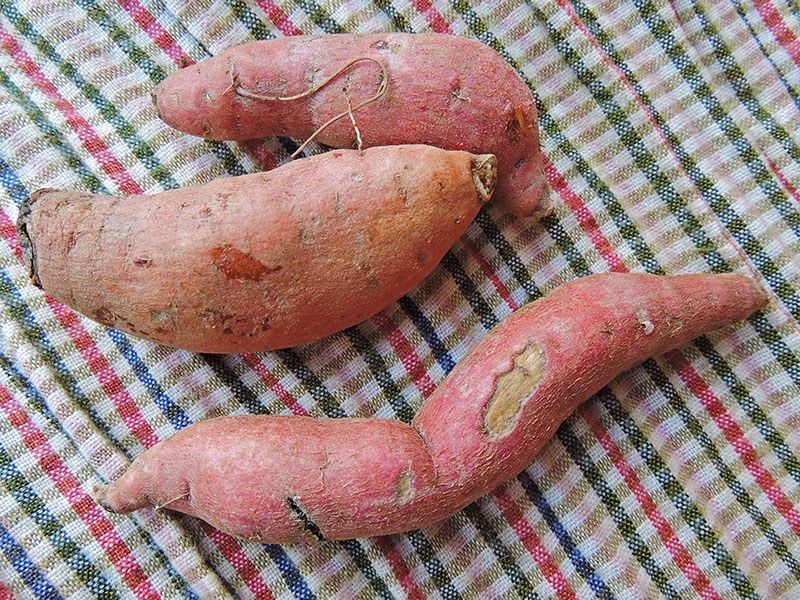
A beautiful meeting that will change the game…
We were lucky in August 2017, to receive the help of a Franco-Canadian volunteer, Elie, who shared our vision on this great project and who came to lend us a hand. Thanks to his amazing work and his investment, the project was finally put on the rails: with the installation of a watering system and a water tower, a real fence to protect the crops, and especially the beginning of real plantations of trees from all kinds, flowers to attract the good and repel the “bad” insects, and our first real vegetables that came out of the ground. A lot of natural fertilizers have also been started, things put in place to recreate a life in the ground, and environmentally friendly solutions to protect plants from different attacks.
And here’s the result… and its changing every day !!!
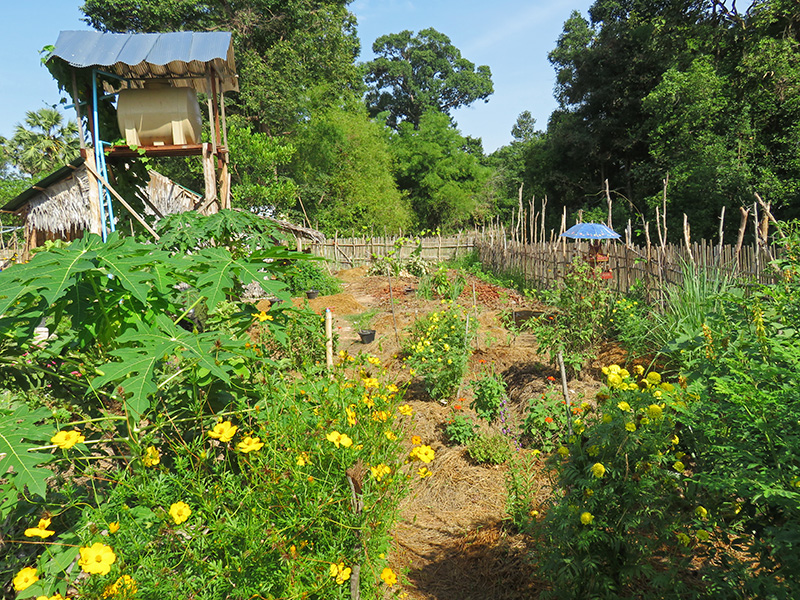
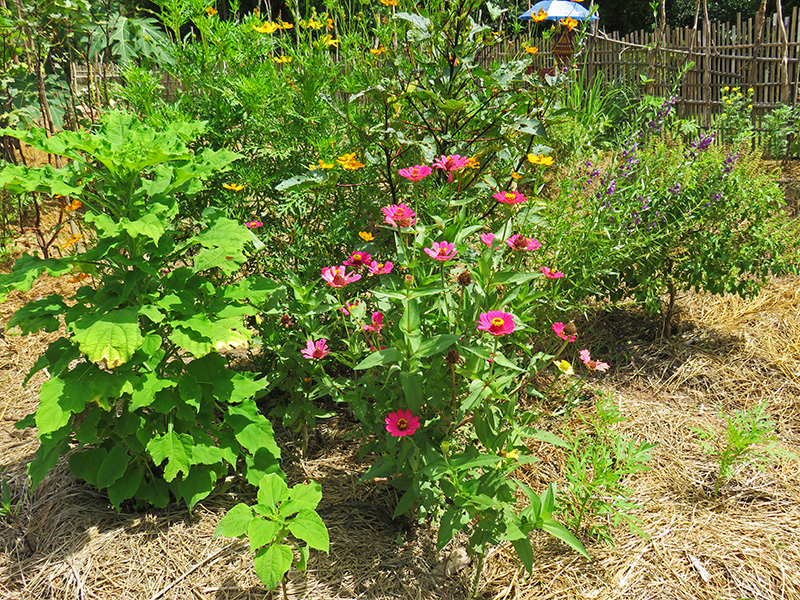
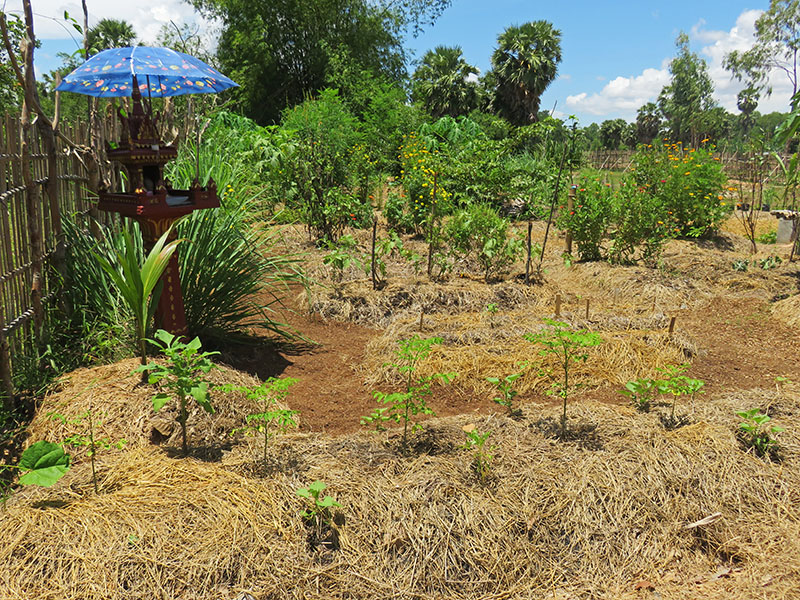
A very important thing, the training started with Peah (in photo with Elie) who became a member of Camborea and responsible for this project which we officially called the “happy garden”, or “suonchbar sabbayrikreay” in Khmer…
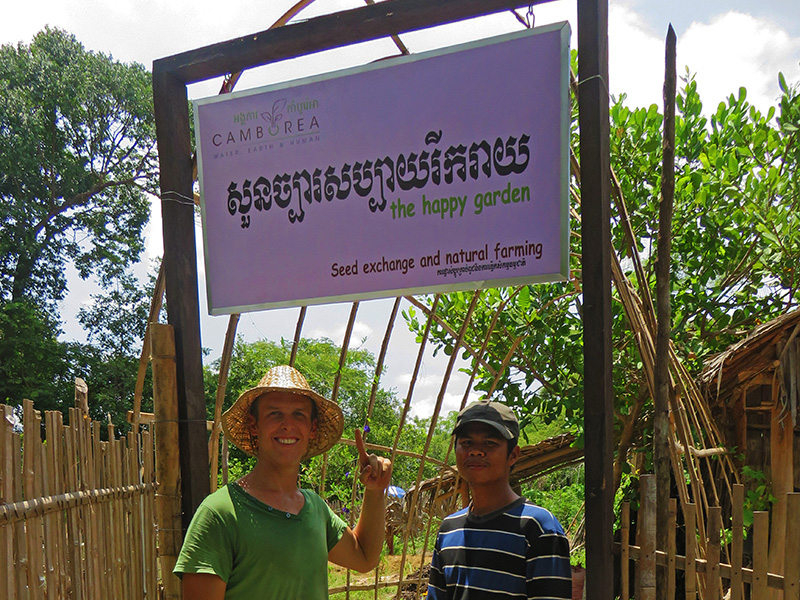
A pond is also being digged, to bring even more biodiversity, but more especially to use all the earth recovered during the work to raise several parts of our land, to protect them from the floods of the rainy season (caused by the neighboring rice fields) and thus have more space for crops all year long. This pond is dug by hand, because all machines and outside input of soil are prohibited in the area of Angkor where we are!

Recently, the first test of “typical garden” was set up on three square meters only, which is the first real step of our beautiful project, before the design of a vegetable garden a little larger that we will implement around houses of selected families.


… unfortunately, this first attempt to fight against malnutrition through food self-sufficiency will not have given the expected result, despite the great care we have provided.
On the other hand, it make us to learn a lot from our mistakes, to question ourselves, and to reorient the project a little bit to a production of seeds at first, seed that we will propose to the families accompanied of course with advice and crop monitoring.
The “typical garden” or “ideal garden” is obviously in our cards, but this ambitious project will need a long period of testing, while well-selected vegetable seeds can quickly help families to eat better …
So here we are again, working more than before to plant everything, more motivated than ever. Always in search of local vegetables, we have been able to select some robust varieties, productive, nutritious, and especially loved by Cambodians who will enjoy growing them and hopefully will be a maximum demanding for them.
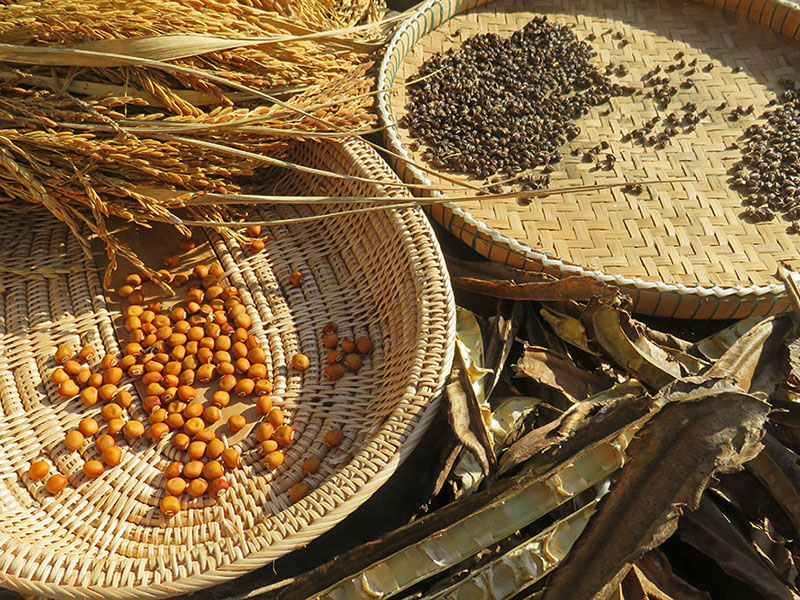
Today, we are in a phase of intensive reproduction of these selected seeds, but we do not abandon our work on permaculture and biodiversity as you can see on the following pictures.
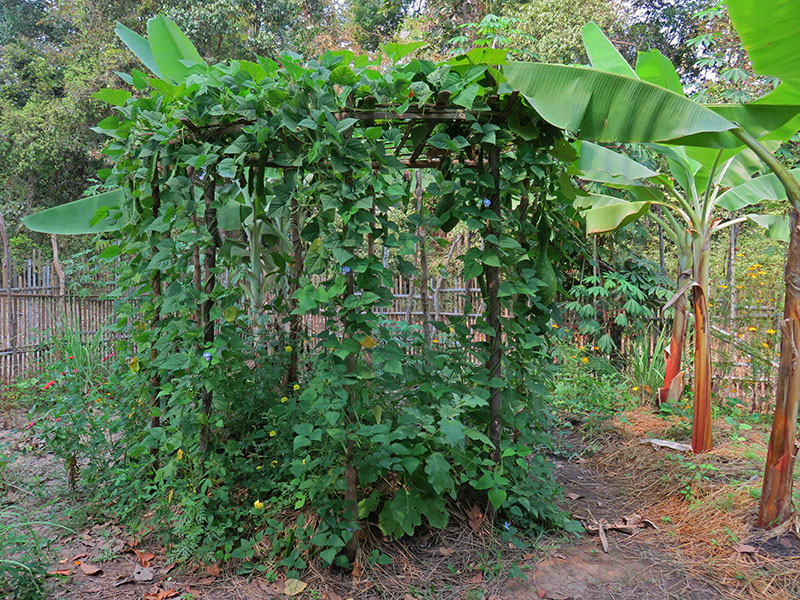
With here climbing some winged beans, calabash squash, and below round eggplants, peanuts, flowers and a future jack fruit tree right in the middle that will provide us shade in few years.

And here an “out of the ground” cultivation of tomatoes, associated with marigolds nematicide and Thai basil, more obviously some “climbers” who will bring soon even more shadow in all this.
A new turn in this beautiful project…
The opening of our school in November 2019, right next to the garden, completely changed the project. The construction has disturbed us a lot in terms of work management of course, but also in terms of set up of the garden. Indeed, we took advantage of the work in bringing trucks of soil on the land, to raise the vegetable garden for good, and thus put it out of the water once and for all.


More than 60 trucks of soil have been necessary, that’s represent more or less 480m3 in total…

The final grooming was done by draft animals, to stay in our line of conduct.
So we started from scratch again on this new cultivable area, and took the opportunity to ask ourselves the right questions about the development of it, as well as to take a step back on the overall vision of the project. Indeed, the production of free seeds and the installation of an “ideal” garden at the villager’s home remains a primordial part of our commitment, but the coming of this school and of the children is a boon to spread other messages around agroecology, the importance of biodiversity, and respect for nature in general.
The old cultivable area will therefore remain an experimental zone, messy, very diverse and therefore a very rich area, while the new freshly enhanced part will be more structured, as a showcase for this respectful agriculture. This new part will be the place conducive to training, discussion and wonder around the richness of our garden. For this, we are developing reception areas, shaded where we can sit with visitors and share our vision.

Numerous culture beds were then installed, to better manage the different productions and make the area more aesthetic. These beds also allow us to focus on creating living soil in certain spaces, the soil being the basis of all natural agriculture, something that was not possible on the whole site, for now …

What a change in such a short time, don’t you think?!? !!! And this is only the beginning…

It’s climbing…

It’s beautiful…
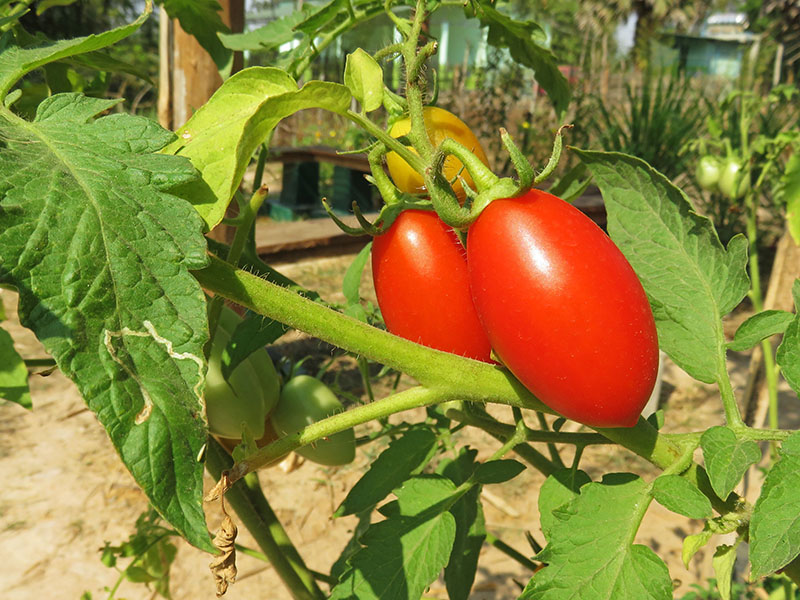
It’s yummy…
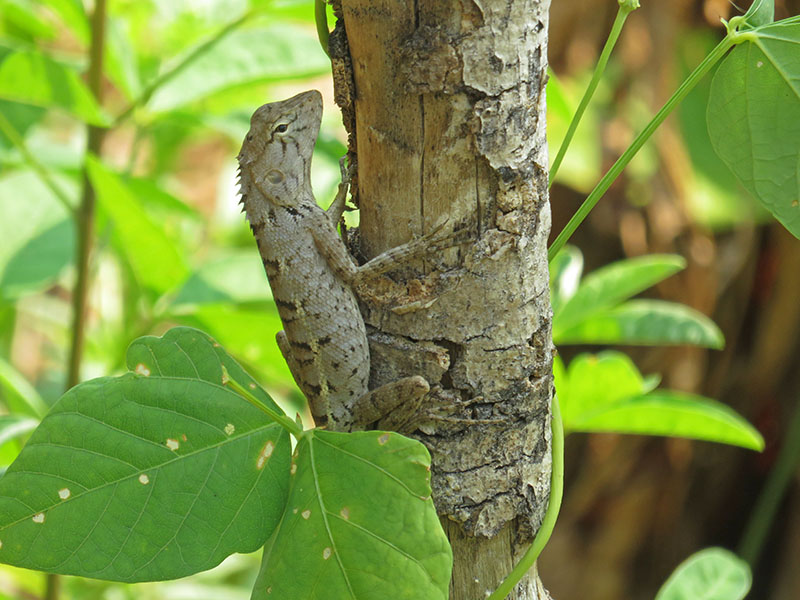
And it’s alive…
Finally, a last area will be left fallow, to help biodiversity and bring more life to the whole. One day it may also be able to welcome some farm animals, but it’s another challenge…
We are trying to keep the site up to date, but things are moving quickly, very quickly here. So if you want to follow the progress of this superb project step by step, join us on Facebook by liking our page by liking our page: Camborea on FB
This vast project, even if it is on very good track, is still unfortunately far from achieving the expected results due to lack of means, in particular to exploit all the land we own. But this cause is fundamental to us and, we hope, to you, so follow this link and help us to make it together, here.
